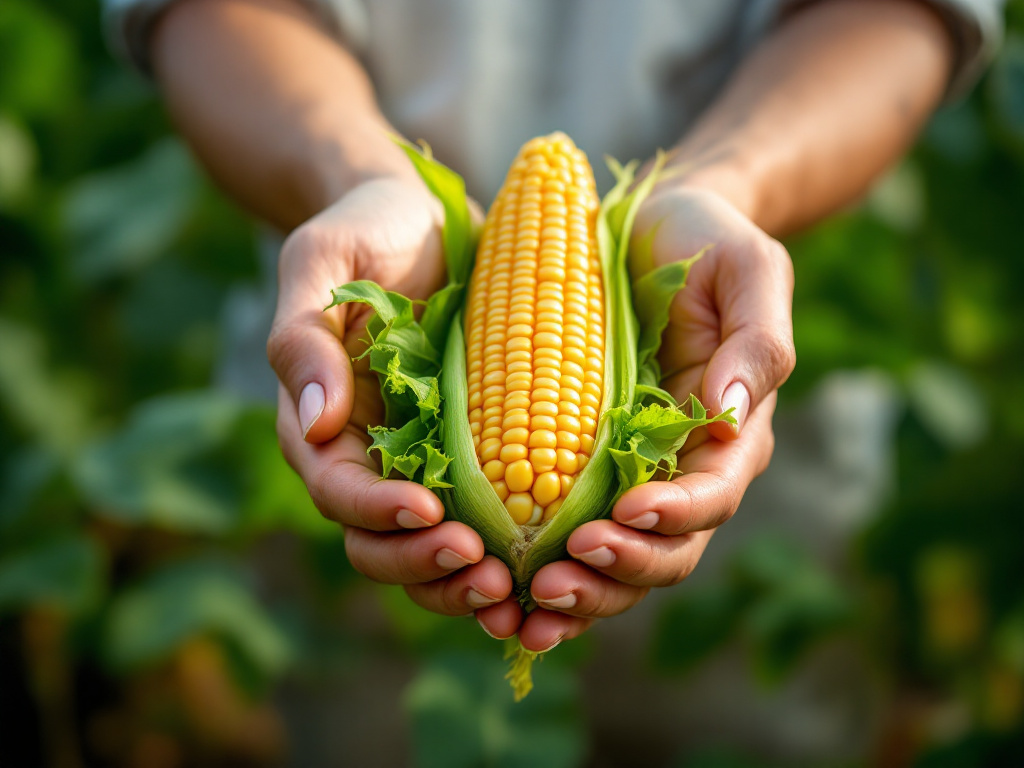Image generated by flux-ai.io & content generated by ChatGPT Version 4o-mini
Sweet Corn Cultivation Insights: What Leon County Growers Need to Know
Leon County, nestled in the heart of Florida, is home to a vibrant agricultural community that relies heavily on crops like sweet corn. Recent research from the University of Florida’s Institute of Food and Agricultural Sciences (UF/IFAS) sheds light on best practices for sweet corn production, which is crucial for local farmers looking to maximize yield and quality.
Key Findings of the Research
The study highlights several important aspects of sweet corn cultivation that can directly impact local farmers:
-
Optimal Planting Times: For growers in North Florida, including Leon County, the ideal planting window for sweet corn is from February to April. This timing helps ensure that the corn matures before the hotter summer months, which can stress the plants.
-
Spacing and Seeding: To achieve the best growth, sweet corn should be planted with rows spaced 28 to 36 inches apart, and individual plants should be spaced 6 to 8 inches apart. This configuration allows for adequate sunlight and airflow, which are essential for healthy corn.
-
Maturity and Harvest: Sweet corn typically takes between 64 to 90 days from planting to reach maturity. This means farmers must carefully plan their planting dates to align with market demand, ensuring fresh produce is available when consumers want it.
Choosing the Right Corn Varieties
The research also details different cultivars of sweet corn, each with unique characteristics:
- Supersweet Varieties: These types have higher sugar content and are popular among consumers for their sweetness. However, they require more care in handling and storage.
- Standard and Enhanced Varieties: While these may not be as sweet, they often have better storage life, making them a suitable choice for farmers who want to sell their corn over a longer period.
Pest and Weed Management
Managing pests and weeds is a critical component of sweet corn production. The study offers recommendations for herbicides and insecticides that are effective yet safe for the environment. For instance, certain pre-emergence herbicides can help control weeds before they sprout, reducing competition for nutrients.
Local farmers can consult with UF/IFAS Extension agents to get personalized advice on integrated pest management strategies, which combine chemical and non-chemical methods to protect crops while minimizing environmental impact.
Why This Matters to Leon County
For residents of Leon County, particularly those involved in agriculture, these findings are more than just academic. They provide practical, actionable advice that can lead to:
- Increased Yields: By following best practices in planting and pest management, local farmers can improve their harvests, leading to better profitability.
- Sustainable Practices: Understanding how to manage pests and weeds effectively not only helps in crop production but also contributes to sustainable agricultural practices that protect the environment.
- Community Food Systems: Healthier crops mean fresher produce for local markets and food systems, supporting the economy and providing residents with high-quality food options.
As Leon County continues to grow, understanding and implementing the latest agricultural research will be key to maintaining its rich farming heritage and ensuring food security for the community. If you’re a local farmer or simply interested in sustainable practices, consider reaching out to the UF/IFAS Extension office for more resources and support. Together, we can foster a thriving agricultural landscape right here in our backyard.
References
HS737/CV135: Chapter 17. Sweet Corn Production. (n.d.). Ask IFAS – Powered by EDIS. https://edis.ifas.ufl.edu/publication/CV135

